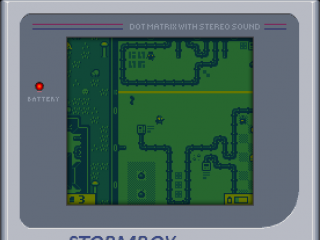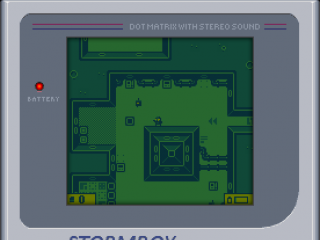Posts Tagged ‘FGL’
-
Cat Astro Phi is finished and up for bidding on FGL
5th Nov 20104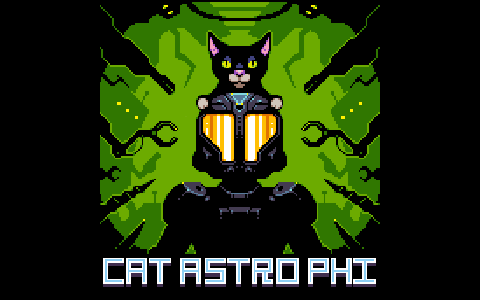
Cat Astro Phi is a game Ilija and I have been working on, and tinkering with, for the past month or so. I always wanted to make a Gameboy Classic game, back in the day, but was too young and never got the chance. This changed when in August my main desktop PC died. While I waited 6 weeks for a replacement all I had access to was a very basic laptop. No Flash IDE, no Photoshop, no SoundBooth. Just really basic software and not much grunt power. So I thought it’d be fun to try and create a game, in the style of a Gameboy Classic, as all I had access to were super-limited apps anyway. So I restricted myself to those limitations – a resolution of 160 x 144, only 4 colours on-screen, 3 channel chip music, 8×8 tile sprites (or similar). It was a fun experience 🙂
Well one thing lead to another, and here we are two months later and Cat Astro Phi is done! Ilija has worked his usual pixel magic on the graphics and music, and together we’ve built a 3-level action adventure game. The blurb goes something like this …
“An unfortunate accident leaves your pet cat stranded. Explore and battle your way through three hostile alien planets. Each with their own puzzles, traps and inhabitants to encounter.
Created in the style of Gameboy Classic games, Cat Astro Phi features stunning pixel artwork and authentic sounds through-out. Three planets, with interactive story sequences between them, leads the player on a journey – as they explore the levels, interact with the environment, solve puzzles, hack lazer walls, explode bombs, avoid sentry guns and blow stuff up! All while searching for their missing pet cat. “
The game is in active bidding here on FlashGameLicense. If you’re a sponsor / portal then join in 🙂 Fellow FGL devs can also play the game there.
The rest of you will have to wait until it’s released into the wild I’m afraid. At which point I’ll do a proper dev write-up. Until then I’ll leave you with a couple of screen shots (click for full size).
Am glad to finally have this done 🙂 It’s been too long since we released anything (6 months), but brand new babies will do that to your productivity!
-
Getting Your Flash Game Sponsored – Book Review
1st Nov 2010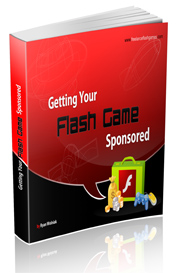 Ryan Wolniak, fellow Flash game dev and owner of the popular freelanceflashgames.com was kind enough to send me a copy of his new book: Getting Your Flash Game Sponsored. This is a self-published title available to buy from his site for $20 in PDF form, or $30 as a paperback.
Ryan Wolniak, fellow Flash game dev and owner of the popular freelanceflashgames.com was kind enough to send me a copy of his new book: Getting Your Flash Game Sponsored. This is a self-published title available to buy from his site for $20 in PDF form, or $30 as a paperback.I felt it only fair that I should give the book a detailed but balanced review. So after reading it all that is what I present here …
The contents of this book start with “What is Sponsorship?” and cover a decent range of subjects from uploading to FGL, making your game “appealing”, dealing with the bidding process through to sale. There are over 160 pages of content, although depending on your experience as a developer some of them could be seen as filler.
It kicks off with the most important aspect of all – the variety of sponsorship offers out there, and the terminology that goes with it. Exclusive, Primary, Site-locked, Performance Bonuses, etc. It does a good job of giving the basics for each type although I did smile at the comment that “site-lock” sales usually are not “that much work” because you just switch out branding and drop in a new API. I’m sure I am not alone when I say that I’ve seen some portal APIs that would make you truly weep! And you should never under-estimate how long some API work can take. It’s not uncommon for the more complex ones to be a good evenings work (3+ hours). On the flip-side I do find that the most complex APIs come from the portals who pay the most.
I like the fact that Ryan mentions the selling of Source Code, although I didn’t agree with the statement that “You lose all rights to your game”. That is entirely specific to the deal you are making. I’ve sold the source code to a couple of my games, and both times they bought the rights to re-brand it for a single-use game and nothing more. It was an easy way to make a decent amount of money, although I know a number of developers who wouldn’t part with their code for all the tea in China.
There are some interesting stats in the Game Details section. Here we are told about the importance of naming our game well. The stats show how many words are optimal in your game title across both Kongregate and Newgrounds. The only issue I had was that the pie chart segments were all in very similar shades of blue making them hard to read. As you can imagine most games have between 1-3 words in their title. This chapter continues to explain the right way to handle thumbnails, game screen shots, your game description and then dives out into an 11 page tangent on video capture and production (should you wish to make your own game trailer). I honestly feel it would have been better to insert good examples of thumb nails, screen shots and really captivating game descriptions instead.
The Upload Process is essentially a guide to using the Flash Game License web site. There’s nothing wrong with this section, and it could be of help to newbies or younger developers. But I can’t help shake the feeling that if you’ve got to the point of being capable of coding your own game, then you’re almost certainly capable of filling out an upload form. Having said that it does help steer you through the jargon minefield you’ll encounter on the way.
The next chapter is on the importance of getting Feedback on your game. Again this is mostly about how to achieve this via FGL and using their First Impressions service. Both things I’d suggest you do. Although First Impressions are very hit and miss, they nearly always carry a core element of truth to them. Once you’ve collected your feedback it makes sense to improve your game based upon it, and there’s a chapter dedicated to doing exactly that. This walks you through improving everything from your main menu, to your instructions process (how you educate the player), to audio, highscores, upgrades and achievements. This is a big section. And for the most part it’s a really good one, especially for new developers.
On page 121 we hit the “Start the Bidding” process. Arguably the most important part of the book. It contains a lot of information direct from the guys who run Flash Game License, by way of lots of quotes about how their process works. This is useful stuff, and gives you a little insight into what’s going on behind the web site itself. There’s a huge section on dealing with emailing sponsors, how to talk to them, negotiation and managing your relationship.
I very much liked the fact that Ryan makes it clear that sponsors are “just people too” as this is bang-on. But I wish he’d expanded this section a bit to include “How to deal with asshole sponsors”. If you are being offered a duff deal, don’t take it. Walk away. If a sponsor is offering you grief via a horrendous API, or taking ages to process a payment, don’t be scared of making this known to them. While I agree that you should remain professional, you should never be made to feel intimidated. I once had a sponsor successfully win the bid on one of my games, only to email me a few days later saying “We’ve realised there is only one level in the game. Can you add some more?” – I was extremely annoyed because it clearly said the game had one level (that was actually the whole point of the game), and more importantly they were requesting something well beyond the price they’d paid for it. So I said “no”. All I can say is don’t let them take the piss – if a sponsor starts asking for changes to your game, or offering creative advice, don’t be scared of reminding them they aren’t the game designer – you are – and they sponsored the game in the state it was shown on FGL, and additional work will be charged for.
There’s a really nice Case Study from Bezerk Studios. Certainly one of the most successful Flash game development team working at the moment, it was really interesting to read about how they are constantly pitting bidders against each other. They demonstrate clearly that even after you’ve done everything this book recommends, and have tweaked your game to perfection, the best deals come down to constant negotiating and haggling, and that in itself is a fine art.
I’m in a mixed mind over the book. Ryan has done a sterling amount of work, collecting together helpful quotes and opinions from developers and sponsors alike. He’s covered all of the core areas of game sponsorship, if a little briefly in some places, and it’s written in a good conversational tone without making too many outlandish claims. However if you’ve already sold a game on FGL then there is probably very little you will read that hasn’t occurred to you already. If you are extremely new to the process, then it covers some solid ground in a decent amount of depth. At the end of the day only you will know if the book is worth your time or not, and there is always the “30 day money back guarantee” on the PDF version, which is a rare and brave thing to offer. I feel there are several sections that could have been added to this book, and some which it wouldn’t hurt from dropping. But as a self-published first attempt I can’t fault the enthusiasm on display here.
Getting Your Flash Game Sponsored is available from http://freelanceflashgames.com/getting-your-flash-game-sponsored/ (and yes I know the layout and copy on this page reads like one of those “Get Rich Quick” schemes – “I learned from their mistakes so you don’t have to!” (ick) but thankfully the copy of the book itself is far more approachable! So don’t let it put you off)
-
Quartet is released (with an FGL sponsorship warning for fellow devs)
26th Jun 2010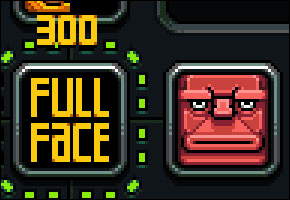 After what feels like an age, Ilija and I are pleased to announce that our game Quartet is finally released to the wild, ready for you to play!
After what feels like an age, Ilija and I are pleased to announce that our game Quartet is finally released to the wild, ready for you to play!Although development of the game was very rapid (we had the whole concept, art and core game up and running inside of 24 hours) the sponsorship process on this one was anything but. As with most of our games we listed it on FlashGameLicense.com. The process started well, and a mini bidding-war broke out between Gimme5games and MiniJeugos. In the end we selected a bid from MiniJeugos, as although Gimme5 had bid higher, they gave us the ability to run our own ads. So we happily selected them as the winning bid, sent them a friendly message and waited…
… and waited, and waited. After a week we sent them another message on FGL. Nothing. A few days later we tried again, but still they refused to get back to us. Eventually after 2.5 weeks with not so much as a peep from them, we had had enough. Every single message we sent them was civil and polite, but what was so annoying is that we knew they were logging into FGL every day, because we could see their “last logged in” dates. Which basically meant they were choosing to ignore us, which is incredibly unprofessional. We asked FGL to step-in and take action, but they failed to respond to us either.
In the end I contacted the other bidder on the game, Gimme5, explained what had happened and offered them the game instead. They replied the same day, thankfully still wanted it and we took it from there. Our dealings with Gimme5 were fast, professional and courteous. They were quite precise about certain integration features, but it was all to do with their branding placement (they weren’t cheeky enough to start asking us for gameplay changes, which an amazing amount of sponsors do!). So there was a bit of to-ing and fro-ing, but no worse than I’ve experienced with any other sponsor, and the game is live on their site today.
While we were integrating the Gimme5 API/branding, FGL did get back to us. They weren’t able to offer any explanation as to what had happened with MiniJeugos, but we were at least able to cancel our agreement and transfer it to Gimme5. To this day MiniJeugos haven’t so much as offered a single message to us, not even an apology, which is quite incredible. So there we have it… I personally know a number of devs who have dealt successfully with them, but they totally failed for us – so if you are accepting a bid from them on FGL you may want to fire them a PM first, just to check they really mean it. Otherwise it could mean weeks of delay and wasted time trying to sort it out.
-
Quartet released to FGL
23rd May 2010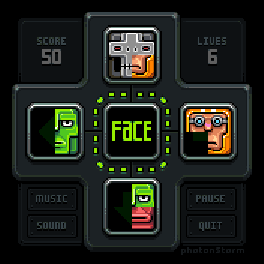 It has been a while since I posted (other than about bitmap fonts in flixel). A brand new baby daughter and a wildly increased work load in the office has cut my coding time down dramatically. But tonight I updated and released our new game Quartet. Quartet is a graphically retro-inspired puzzle game. You attempt to assemble faces as quickly as possible, with more “complete” faces scoring much bigger points. As the timer decreases things get frantic and it’s as much as you can do to survive, let alone put that final piece of robot chin into the slot you need to secure a “full face” bonus 🙂
It has been a while since I posted (other than about bitmap fonts in flixel). A brand new baby daughter and a wildly increased work load in the office has cut my coding time down dramatically. But tonight I updated and released our new game Quartet. Quartet is a graphically retro-inspired puzzle game. You attempt to assemble faces as quickly as possible, with more “complete” faces scoring much bigger points. As the timer decreases things get frantic and it’s as much as you can do to survive, let alone put that final piece of robot chin into the slot you need to secure a “full face” bonus 🙂The game is now in active bidding on FlashGameLicense, and we’ve had favourable feedback and play testing from a lot of people. Those who “get it” seem to really love it, and ferocious high score challenges have occurred on the beta test. We took a lot of player feedback on-board and produced the final build this weekend, which is up on FGL.
Right now I cannot tell how the bidding will go. It’s started ok, with a healthy first bid, but the weekend has meant its failed to progress from there. I think the quirky retro style may put some sponsors off (as opposed to the game itself) but personally I love what Ilija’s done with the graphics and music. It has a charm all of its own. And while part of my brain wonders what would have happened had we shoe-horned it into a contrived Aztec / Egyptian setting, or one with cute Safari animals, I’m glad we didn’t.
I’m also glad that Quartet is finished, and that we completed it in such a short time scale. There is nothing quite like the feeling of finally releasing a game! It’s quite a buzz. A good kick-start, because we have much bigger, more impressive titles looming sharply on the horizon, and some big changes for this blog. So stay tuned folks 🙂 oh and if you can view the game on FGL, be sure to check out the Credits!
-
Star Fish is released
24th Sep 2009 I’m pleased to say that my latest game Star Fish is released and ready to play. Enjoy some underwater aquatic antics in this mouse avoider / collect-em-up. Although the whole game was started and finished in a day, I’m still happy with the presentation and playability. If I had wanted to spend more time I would have introduced moving baddies and more levels. Even so, there are 25 to complete, which is probably 20 more than most people will ever see 😉
I’m pleased to say that my latest game Star Fish is released and ready to play. Enjoy some underwater aquatic antics in this mouse avoider / collect-em-up. Although the whole game was started and finished in a day, I’m still happy with the presentation and playability. If I had wanted to spend more time I would have introduced moving baddies and more levels. Even so, there are 25 to complete, which is probably 20 more than most people will ever see 😉The game uses artwork by the same artist that did the cute insects in my game Bug Box. I think the “cute factor” really played against me when the game was up for bidding on FlashGameLicense. Chris/FGL admitted to me that they don’t have too many “kid friendly” portals on there, which made the game a hard sell. Still, my thanks to RobotJamGames and BigFishGames for taking it on 🙂
I’m very pleased to have created another game this year. I reckon I’ve still got a few left in me, but the months are closing in, and I sense the proximity of 2010.
Hire Us
All about Photon Storm and our
HTML5 game development services
Recent Posts
OurGames
Filter our Content
- ActionScript3
- Art
- Cool Links
- Demoscene
- Flash Game Dev Tips
- Game Development
- Gaming
- Geek Shopping
- HTML5
- In the Media
- Phaser
- Phaser 3
- Projects
Brain Food

